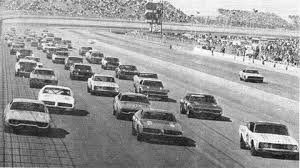
Greetings from Ontario, California
.
.
From the travels and adventures of the
“World’s #1 Trackchaser”
.
.
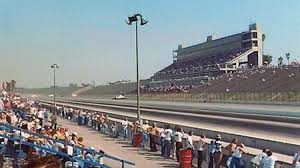
Ontario Motor Speedway
Asphalt oval
Lifetime Track #56
Reprinted with permission from Randy Lewis Racing.

THE CLASSIC TRACKCHASER REPORT
Editor’s note: This is a CLASSIC Trackchaser Report. What the heck does “Classic” mean? It’s simply a Trackchaser Report that comes from my trackchasing archives. For whatever reason (usually not enough time) it didn’t get posted to my website when I first made the track visit. Often times a classic TR will not have a video and/or photo album attached. I didn’t begin producing my YouTube videos until 2009 (YouTube channel: RANLAY). I didn’t begin writing a complete Trackchaser Report until I had seen about 430 tracks. Photo albums were sort of hit or miss during the early years of my trackchasing. Additionally, if you see a website link know that link worked when the TR was originally written. Will it work now? Your guess is as good as mine! Nevertheless, this CLASSIC Trackchaser Report has finally bubbled to the surface and is now available for everyone to see at www.randylewis.org. I hope you enjoy it.
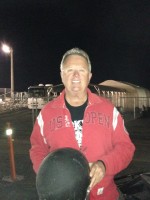
I AM A TRACKCHASER
My name is Randy Lewis. I live in San Clemente, California. I am a “trackchaser”. I trackchase. Before you discovered my site had you ever heard of trackchasing? Maybe not? So….what the heck is trackchasing? Sit back, take a read and you’ll be an expert on my hobby of trackchasing when you’re finished.
Here’s my best explanation.
Trackchasing is a three-pronged hobby. I’m a racing fan. I love to travel. I love to analyze opportunities to get the most out of everything while saving time and money.
Trackchasing fills the need for all of the above. The racing part of my trackchasing has me trying to see wheel to wheel auto racing at as many different racetracks as I can all over the world. Yes, all over the world. So far things are going pretty well. As this is written, I’ve seen racing in 85 countries at more than 2,500 tracks. As a matter of fact, I’ve seen racing at more tracks than anyone else in the world.
Equally important to me are the things I get to see and experience over the “long and dusty trackchasing trail”. I call these adventures “Trackchasing Tourist Attractions”. You won’t want to miss my “Trackchasing Tourist Attractions” page. Here’s the link: Trackchasing Tourist Attractions or my “Sports Spectating Resume” page, Sports Spectating Resume on my website at www.randylewis.org.
I live in southern California. That’s probably the most inconvenient location in the country for seeing tracks in the U.S. Most of the racetracks in the U.S. are located well over 1,000 miles from where I live. As a matter of fact, my average trip covers 5,000 miles and more. I take 35-40 of those trips each season. In any given year I will travel well over 200,000 miles, rent more than 50 cars, and stay in more than 150 hotel rooms.
I get the chance to meet people all over the world. With trackchasing trips to 85 countries and counting just getting the chance to experience so many other cultures, spend time in their homes and meet their friends is a huge reward for being in this hobby. I am indebted to several of these folks for their help and friendship.
It takes a good deal of planning to do the above and not spend my entire retirement portfolio. I enjoy the challenge, the travel and every other aspect of “trackchasing”. In reality, my trackchasing hobby is a lot like being with the carnival. I breeze into town, stay a little while and then head on down the road.
Today’s adventure was one more of the 2,000 trips that have taken me up, down and around the proverbial long and dusty trackchasing trail. If you would like to see where I’ve been and experience those adventures here’s the link:

Randy’s Complete Track List
If you’ve got a question, comment or whatever please leave it at the bottom of this report. It’s very easy to do. Or you can visit me on Facebook. Thanks!

Randy on Facebook
FOREWORD
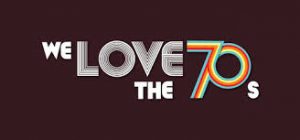
Pre-1980.
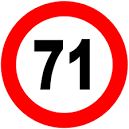
The first 71.
The first 71 tracks on my all-time trackchasing list were seen prior to 1980. Back in those days, I didn’t think to record the date I first went to a track. Nevertheless, I have the Ontario Motor Speedway listed as my 56th-lifetime track. I’m not exactly certain how many races we saw at OMS before it closed in 1980 and was demolished in 1981.
During my business career we were transferred around the country quite a bit as I climbed the corporate ladder. We started in Peoria, Illinois before being transferred to Cincinnati, Phoenix and then Los Angeles. We were in Southern California from 1976-1979. That would have been the time frame we were going to the races in Ontario. Later, in 1979 we would move to Connecticut and then Chicago before returning to SoCal for good in 1983.
We, including Carol, my stepfather and brother-in-law were able to see Ontario racing that included the NASCAR Cup Series and the Indy Car Series.
Since I don’t have any formal notes from my Ontario experiences I thought I would share some information I found on Wikipedia about the Ontario Motor Speedway brief but interesting history. Here goes.
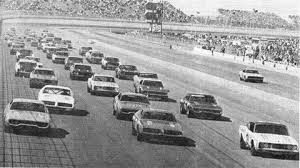
Ontario Motor Speedway
History
| Ontario Motor Speedway | |
| The Big O Indianapolis of the West |
|
| Location | Ontario, California |
| Capacity | 180,000 |
| Broke ground | September 25, 1968 |
| Opened | August 1970 |
| Closed | December 17, 1980 |
| Construction cost | US$25.5 million |
| Architect | Kite & Overpeck A.I.A. Architects/John Hugenholtz of Zandvoort, Holland and Michael Parker of Portland, Oregon. |
| Former names | None |
| Major events | USAC Championship Car California 500 (1970–1978) CART Championship Car California 500 (1979–1980) Association Mattel Hot Wheels Super Nationals drag race NASCAR Winston Cup Los Angeles Times 500 (1974–1980) Formula One/Formula 5000Questor Grand Prix (1971) |
| Oval | |
| Length | 2.5 mi (4.023 km) |
| Banking | Turns – 9 degrees° |
| Infield Road Course | |
| Length | 3.194 mi (5.14 km) |
Ontario Motor Speedway was a motorsport venue located in Ontario, California. It was the first and only automobile racing facility built to accommodate major races sanctioned by all of the four dominant racing sanctioning bodies: USAC (and now IndyCar Series) for open-wheel oval car races; NASCAR for a 500-mile (800 km) oval stock car races; NHRA for drag races; and FIA for Formula One road course races. Constructed in less than two years, the track opened in August 1970 and was considered state of the art at the time.
The first full year of racing included the Indy-style open-wheel Inaugural California 500 on September 6, 1970; the Miller High Life 500 stock car race on February 28, 1971, the NHRA Super Nationals drag race on November 21, 1970, and the Questor Grand Prix on March 28, 1971. Each of these inaugural races drew attendance second only to their established counterparts, the USAC Indianapolis 500, the NASCAR Daytona 500, the NHRAU.S. Nationals, and the U.S. Formula One race at Watkins Glen.
The track was purchased for real estate development by Chevron Land Company in late 1980 and demolished at a cost of $3 million in 1981. It is estimated that the 800-acre (3.2 km2) facility, with 155,000 permanent seats and an air-conditioned private stadium club would have a replacement cost in 2009 of over $350 million.
In the mid-sixties, there were two prior attempts to build “The Indianapolis of the West.” The first attempt was led by National General Corporation, and the second by the Santa Anita Consolidated and Filmways Corporations. The second attempt focused on an 800-acre parcel of land (the Cucamonga Winery) directly across from the new Ontario International Airport on the San Bernardino Freeway (Interstate 10), 40 miles (60 km) east of downtown Los Angeles.
William Loorz CEO of Stolte Construction Co., one of California’s largest commercial construction companies, who had been designated the contractor on the project, sent information on the failed projects to David Lockton, co-founder with Chuck Barnes of Sports Headliners, a leading sports management firm in Indianapolis, Indiana that acted as agent and manager for most of the Formula One and Indianapolis-style racing drivers.
Sports Headliners represented most of the leading Formula One drivers and the winners of the past 10 Indianapolis 500-mile (800 km) races. Lockton was convinced that the prior efforts failed for lack of involvement with anyone familiar with the automobile racing community. He flew to Los Angeles in October 1966, met with Stolte and viewed the proposed site which had by then been subdivided into fourteen separate parcels owned by 150 individual owners, many of them Hollywood celebrities who had bought the land for tax shelters.
Lockton spent the next nine months acquiring options on all of the fourteen parcels and then leveraged his position as the drivers’ representative on the board of USAC (United States Auto Club) the sanctioning body for the Indianapolis 500 race; and his personal friendship with Tony Hulman, owner of the Indianapolis Motor Speedway to obtain not only the promise of a USAC sanctioned 500-mile (800 km) race, but also the commitment and involvement of Indianapolis Motor Speedway personnel. He obtained the first and only IRS ruling to allow tax deductibility of the $25.5 million industrial revenue bond offering secured by the real estate, in which the facility would be run by a for-profit operating company.
Lockton convinced leading bond investment banker John Nuveen & Co. in Chicago as well as Citi Securities Corporation in Indianapolis to underwrite the bond offering. He also raised $5 million in equity from Pioneer Lands Corp.; Donaldson, Lufkin & Jenrette; and Stolte Construction Company; with Lockton and these three entities owning the speedway in more or less equal proportions.
California born architect Walter Ted Tyler was retained by Stolte to design the state-of-the-art facility. Track management planned to make OMS as a replica of the Indianapolis Motor Speedway with many important enhancements. The racing surface was one lane wider and, unlike the Indy speedway, the short chutes (the two shorter straight-aways, at either end of the track) were banked, which made OMS slightly faster.
In addition, OMS was built with an infield road course, making it a facility for both oval and road course style racing in addition to drag racing. At the time, the Indianapolis Motor Speedway, familiarly known as “The Brickyard” did not have an infield road course and one was not built there until 2000. The Indianapolis track, which was first built in 1909, was originally paved at great expense with 3.2 million paving bricks. Today, 3 feet (0.91 m) of original bricks remain at the start/finish line, still giving meaning to “The Brickyard”. To symbolize Hulman’s gesture of friendship with Lockton and support for the “Indy of the West,” he provided a special gift from Indy: a circle of the original bricks from the Indianapolis Motor Speedway were laid in OMS’s Victory Lane.
The Ontario Motor Speedway introduced many innovations to the sport of automobile racing and is attributed as being the facility that started the boom in development of similar super speedways which made automobile racing track ownership one of the highest growth segments from 1980 to 2005. Ontario pioneered a private stadium club with annual memberships, corporate suites, crash absorbent retaining walls and safety fences, the first pro-am celebrity race, state-of-the-art modern garage facilities for the race teams, and a computerized real-time timing and scoring system which showed in real-time the positions on the track to spectators during the race. This timing and scoring system was subsequently adopted by the Formula One circuit and ultimately by the Indianapolis Motor Speedway.
During the 22-month construction period, speedway management negotiated the required race dates from the rival sanctioning bodies, convincing the FIA (Federation Internationale de L’Automobile) to allow a second U.S. Grand Prix in 1972, contingent upon conducting a qualifying race (the Questor Grand Prix) in 1971.
OMS was the first automobile race facility to launch a multimillion-dollar marketing campaign based on extensive market research. The research indicated that in order to attract more than the approximately 50,000 hardcore racing fans in Southern California it would be necessary to convince the non-racing fan of the new speedway’s safety to overcome their fears of seeing a terrible accident; to position the facility as a clean, safe, fun place to take the family, and a place to rub elbows with Hollywood stars, astronauts and other celebrities. The speedway launched a radio, billboard and newspaper advertising campaign, developed by the Los Angeles-based Campbell Ewald Agency, in December 1969, promoting the California 500 as “the place for the family to be for their Labor Day weekend” nine months later.
Legendary Hollywood PR agent, Warren Cowan of the Rogers & Cowan Public Relations agency heavily promoted the Hollywood community and the astronauts’ interest in the sport and involvement with the track. During races the suites were full of celebrities, including Paul Newman, Kirk Douglas, Dick Smothers, John Wayne, James Garner and Ina Balin, as well as many astronauts, including Pete Conrad. The dedication of the track occurred in August 1970 with the staging of the first Celebrity Pro-Am Race, featuring many stars from the entertainment industry paired with professional, race winning drivers. The Celebrity Pro-Am race was subsequently aired as a TV special on NBC.
The speedway Board of Directors when the track opened consisted of Chairman Dan Lufkin, of Donaldson, Lufkin, Jenrette; CEO David Lockton; Donald Riehl, of DLJ; William Loorz, CEO of Stolte Construction; Paul Newman, Kirk Douglas, and Dick Smothers from the entertainment industry; J.C. Agajanian, an American motor sport promoter and race car owner; Parnelli Jones, 1963 winner of the Indianapolis 500; Roger Penske, retired race car driver, race car owner and auto related business entrepreneur; Briggs Cunningham, an American sportsman who raced cars and yachts; and Chuck Barnes, Chairman and CEO of Sports Headliners, and former Director of Public Relations for Firestone Tires.
The advertising campaign was so successful that all reserved seats were completely sold out over six weeks before the Inaugural California 500. The 178,000 in paid attendance and $3.3 million gross remained the largest crowd and highest gross in inflation-adjusted dollars of any single-day sporting event other than the Indianapolis 500 for nearly three decades. California Governor Ronald Reagan presented the trophy to race winner, Jim McElreath, a teammate of car owner, A. J. Foyt. President Richard M. Nixon was represented at the event by his daughter Tricia Nixon, and her husband, Ed Cox.
The second event, the Mattel Hot Wheels Super Nationals Drag Race on November 20, drew a crowd second only to the NHRA Championships in Indianapolis, Indiana and the Ontario drag strip proved to be the fastest ever with many world records set. The NASCAR sanctioned Miller High Life 500-mile (800 km) stock car race on February 28, 1971, drew a crowd of 80,000 and was the third-largest crowd to see the first low bank 2-1/2 mile oval 500-mile (800 km) stock car race, and the third-largest attendance for a stock car race behind the Daytona 500 and the Talladega 500. The Questor Grand Prix, won by Mario Andretti on March 28, 1971, was a head-to-head battle between European drivers using Formula One cars against the U.S. Formula 5000 series. This format was a precondition to receipt of a second FIA sanctioned U.S. Grand Prix. The crowd of only 55,000, while the largest to attend a road race in California, was a disappointment; even so, the speedway’s schedule of upcoming events printed on page 130 of the 1971 California 500 official program listed a “Second Annual Questor Grand Prix” taking place on April 9 as “One of two full-points World Championship Formula 1 races scheduled for the U.S. next year.”
From a racing standpoint, the inaugural season was a tremendous success and from an attendance standpoint, only the hybrid Questor Grand Prix was a disappointment. In April 1971, Lockton resigned as CEO from Ontario (as well as from Sports Headliners) to pursue non-automobile racing-related interests and was replaced as CEO by Ray Smartis, the Vice President and General Manager. Despite the speedway’s commercial success in building attendance for each event and the clear potential for future profitability, in the short term, the operating company had difficulty meeting its debt service obligations on the municipal bonds, primarily due to the shortfall of the hybrid Questor Grand Prix race and a downturn in California 500 attendance in year two.
The advertising campaign for the Inaugural California 500 had guaranteed seat purchasers seat renewal rights in perpetuity if they paid for them within 30 days of the last race. Over 20% of the seats for the second 1972 Cal 500 event were sold on this promotion, providing OMS with almost $800,000 in advance ticket sales. Rather than a sustained campaign, the advertising or promotional money was not spent on the 1972 race until only a few weeks before the event and attendance was marginally down approximately 30,000 in the second year. In 1973 the operating company was sold and in a “Hail Mary” attempt to make the debt service payments the new operators devised a strategy to stage two California 500 races in one fiscal year. For the third California 500, the established and popular Labor Day date was sacrificed for a March 10 date, despite the evidence from extensive original market, traffic and weather research that Labor Day weekend was by a considerable margin the date with the largest potential attendance. The March crowds never approached the attendance of the Labor Day event and the new operator ultimately defaulted on the debt service.
Ontario was used in the TV show Charlie’s Angels and was also mentioned in CHiPs.
Other events
Attempts were made to provide revenue by holding other events and concerts to promote the track venue more.
On February 28, 1971, OMS promoted and staged motorcycle daredevil Evel Knievel’s record jump over 19 cars, drawing a crowd of 50,000 in paid attendance on the day prior to the NASCAR sanctioned Miller High Life 500 mile stock car race. The jump was filmed as the climactic scene in the movie Evel Knievel, starring George Hamilton, which was filmed in and around the race track during that weekend.
California Jam was held on April 6, 1974. This rock festival concert drew a crowd of 300-400,000, the largest paid attendance for a rock concert. Portions of the concert were televised live on ABC. The performers included (in order of appearance) Rare Earth, Earth, Wind & Fire, Eagles, Seals and Crofts, Black Oak Arkansas, Black Sabbath, Deep Purple and Emerson, Lake & Palmer.
California Jam II was held on March 18, 1978. The second event drew a crowd of almost 300,000 paid attendance. Performers included Ted Nugent, Aerosmith, Santana, Dave Mason, Foreigner, Heart, Bob Welch, Stevie Nicks and Mick Fleetwood, Mahogany Rush and Rubicon.
By 1980, the Ontario Motor Speedway bonds were selling at approximately $0.30 on the dollar. Generally unknown and unrealized by the bond holding public, the 800 acres (3.2 km2) of land originally purchased at an average price of $7,500 per acre, had now risen to a value of $150,000 per acre. Chevron Land Company, a division of Chevron Corporation recognized the opportunity to acquire the bonds and effectively foreclosed on the real estate. For approximately $10 million, Chevron acquired land which had a commercial real estate development value of $120 million, without regard to the historic significance or future potential of the speedway.
Subsequent development
Many of the grandstands and other infrastructure were sold off to other venues. Section 10 and Section 20 (the grandstands on the east side of the arena) at the Paso Robles Event Center (AKA The California Midstate Fair) in Paso Robles, Ca were constructed from grandstands removed from the speedway. Also several ticket booths were relocated from the speedway to the fairgrounds.
The property remained vacant for several years until the mid-1980s when a Hilton Hotel was built on turn 4 of the old speedway site. It was the first multiple-story building of its kind in the City of Ontario.
As of the mid-2000s, development on the property has increased. Over half of the old speedway property, adjacent to Interstate 10, has been developed commercially. However, a minor tribute to the racing heritage of the property can be seen in the street names of the developed area (ex: Duesenberg Drive, Ferrari Lane, and others), in much the same way that the developed area that was formerly Riverside International Raceway reflects the same heritage, with roads named after famous drivers.
In 2007, much of the remainder of the property became Piemonte, a mixed-use development with condominiums, business offices, and some retail stores. In the fall of 2008, the centerpiece of Piemonte opened: the Citizens Business Bank Arena (now Toyota Arena), an 11,000-seat sports and entertainment venue. The arena is home to the AHL Ontario Reign and is built in the general area of Turn 3 of the old Ontario track.
The Ontario Mills is located to the east, across the street from the former site of the Ontario Motor Speedway.
Subsequent racing events
After the failure of the California 500, the IndyCar series replaced the race with the Michigan 500 at Michigan International Speedway. Eight years later in 1988, Riverside International Raceway (in nearby Riverside, California) was also sold and demolished in favor of development.
In 1997, the Auto Club Speedway opened in Fontana, less than 2 miles (3.2 km) from the former site of the OMS, and the two names were sometimes confused. (The California track was called the California Speedway before a naming rights deal was signed in February 2008.)
OMS architect Walter Ted Tyler later designed the Olympic Velodrome for the 1984 Olympics in Los Angeles where many world bicycling records were broken.
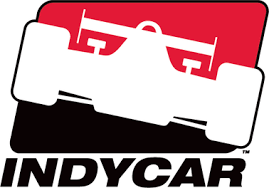
Past winners – IndyCar
California 500
| Season | Date | Winning Driver | Chassis | Engine | Tires | Team | ||||
| USAC National Championship | ||||||||||
| 1970 | September 6 | Jim McElreath | Coyote | Ford | Goodyear | Sheraton-Thompson Racing | ||||
| 1971 | September 5 | Joe Leonard | PJ Colt | Ford | Firestone | Vel’s Parnelli Jones | ||||
| 1972 | September 3 | Roger McCluskey | McLaren | Offenhauser | Goodyear | Lindsey Hopkins Racing | ||||
| 1973 | September 2 | Wally Dallenbach Sr. | Eagle | Offenhauser | Goodyear | STP–Patrick Racing | ||||
| 1974 | March 10 | Bobby Unser | Eagle | Offenhauser | Goodyear | All American Racers | ||||
| 1975 | March 9 | A. J. Foyt | Coyote | Foyt | Goodyear | Gilmore Racing | ||||
| 1976 | September 5 | Bobby Unser | Eagle | Offenhauser | Goodyear | Bob Fletcher Racing | ||||
| 1977 | September 4 | Al Unser | Parnelli | Cosworth | Goodyear | Vel’s Parnelli Jones | ||||
| 1978 | September 3 | Al Unser | Chaparral | Cosworth | Goodyear | Chaparral Cars | ||||
| CART PPG Indy Car World Series | ||||||||||
| 1979 | September 2 | Bobby Unser | Penske | Cosworth | Goodyear | Penske Racing | ||||
| 1980 | August 31 | Bobby Unser | Penske | Cosworth | Goodyear | Penske Racing | ||||

Past winners – NASCAR
| Year | Date | No. | Driver | Team | Manufacturer | Race Distance | Race Time | Average Speed (mph) |
Report | |
| Laps | Miles (km) | |||||||||
| 1971 | February 28 | 21 | A. J. Foyt | Wood Brothers Racing | Mercury | 200 | 500 (804.672) | 3:43:36 | 134.168 | Report |
| 1972 | March 5 | 21 | A. J. Foyt | Wood Brothers Racing | Mercury | 200 | 500 (804.672) | 3:56:04 | 127.082 | Report |
| 1973 | March 4 | Not held | ||||||||
| 1974 | November 24 | 12 | Bobby Allison | Penske Racing | AMC | 200 | 500 (804.672) | 3:42:17 | 134.963 | Report |
| 1975 | November 23 | 15 | Buddy Baker | Bud Moore Engineering | Ford | 200 | 500 (804.672) | 3:33:12 | 140.712 | Report |
| 1976 | November 21 | 21 | David Pearson | Wood Brothers Racing | Mercury | 200 | 500 (804.672) | 3:38:49 | 137.101 | Report |
| 1977 | November 20 | 5 | Neil Bonnett | Jim Stacy | Dodge | 200 | 500 (804.672) | 3:53:50 | 128.296 | Report |
| 1978 | November 19 | 15 | Bobby Allison | Bud Moore Engineering | Ford | 200 | 500 (804.672) | 3:37:44 | 137.783 | Report |
| 1979 | November 18 | 27 | Benny Parsons | M.C. Anderson Racing | Chevrolet | 200 | 500 (804.672) | 3:45:52 | 132.822 | Report |
| 1980 | November 15 | 27 | Benny Parsons | M.C. Anderson Racing | Chevrolet | 200 | 500 (804.672) | 3:51:46 | 129.441 | Report |

